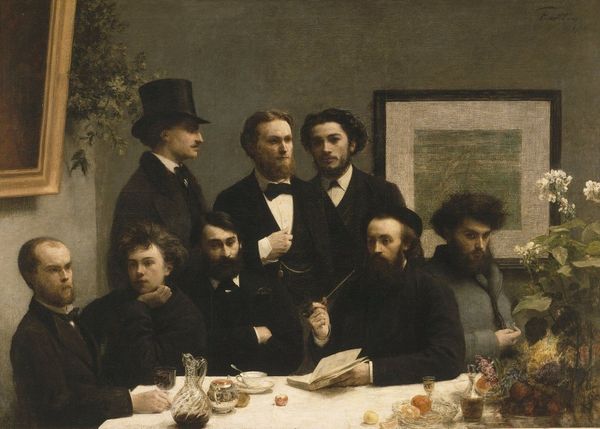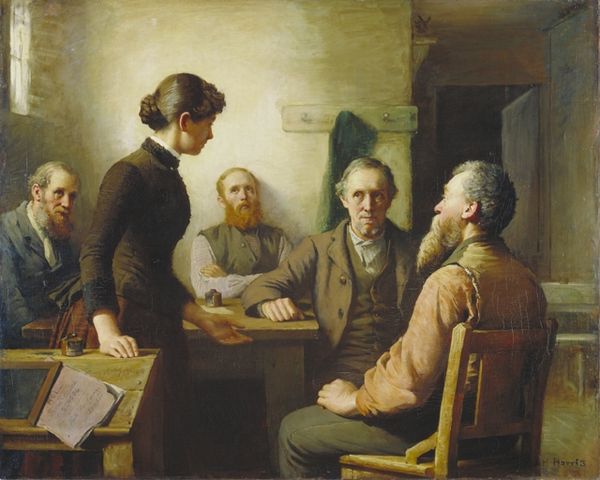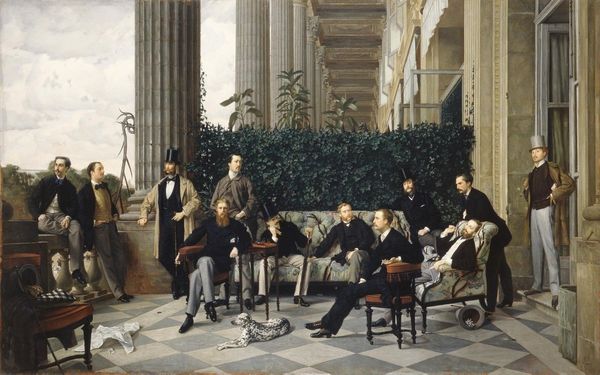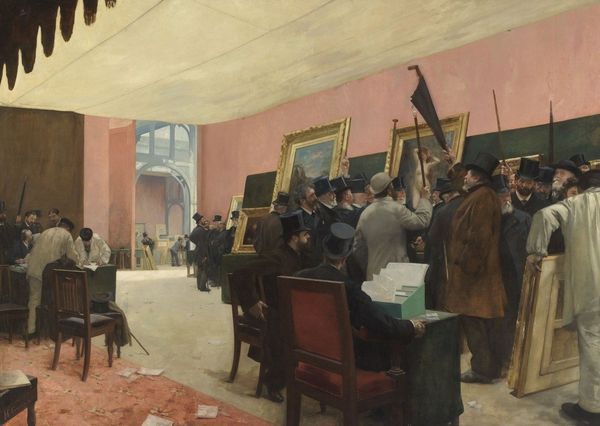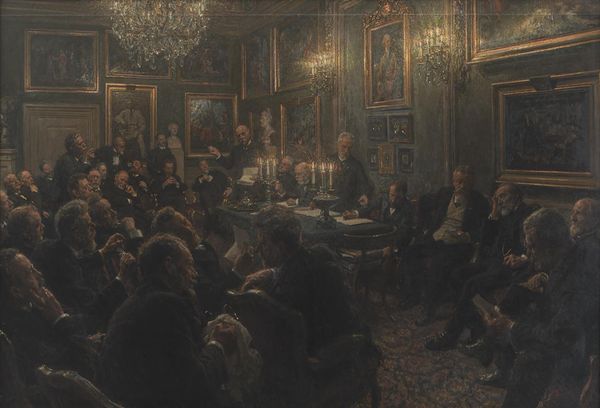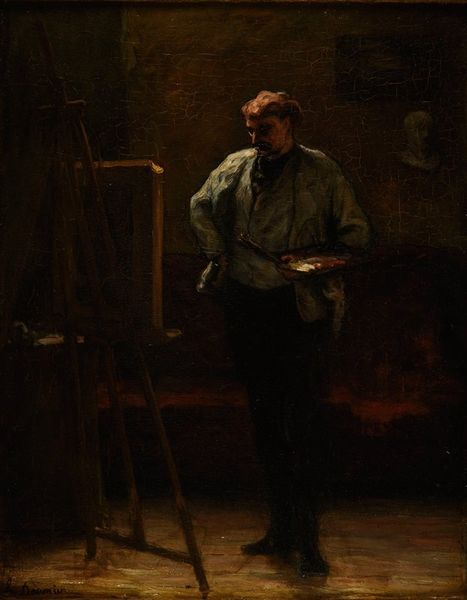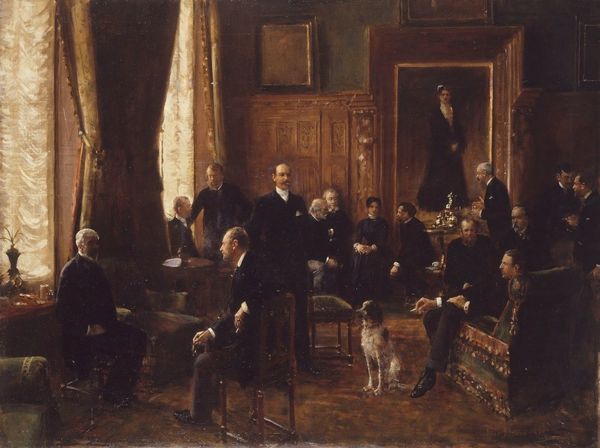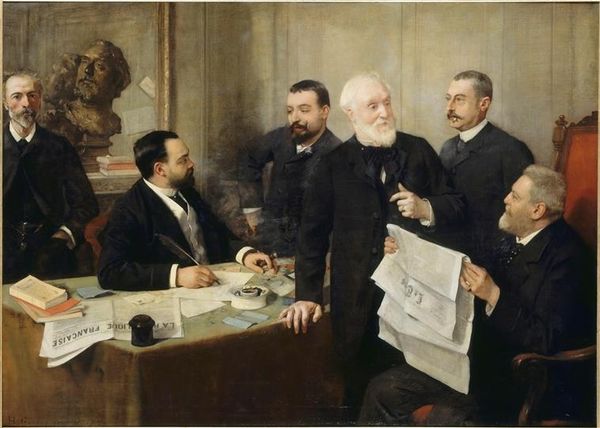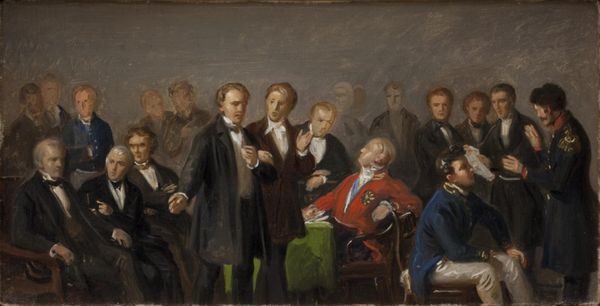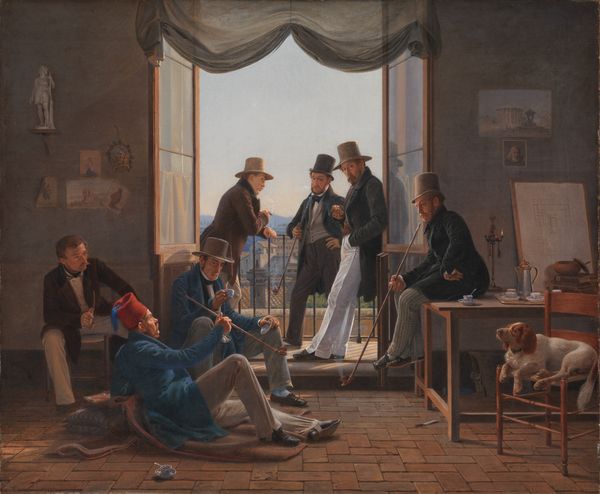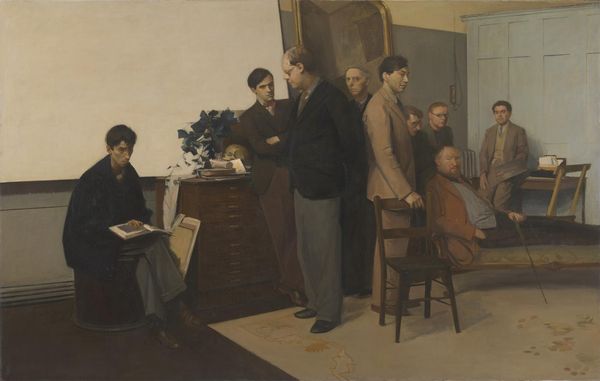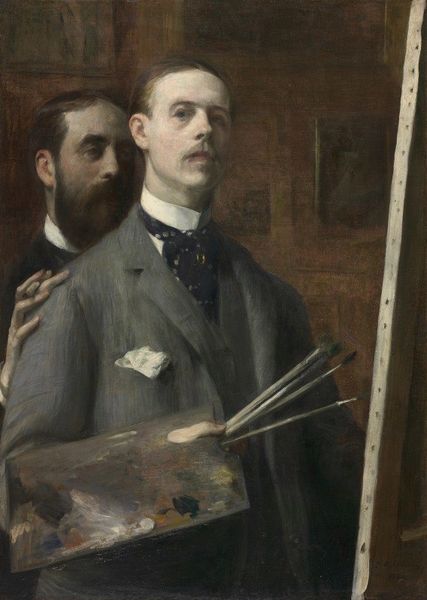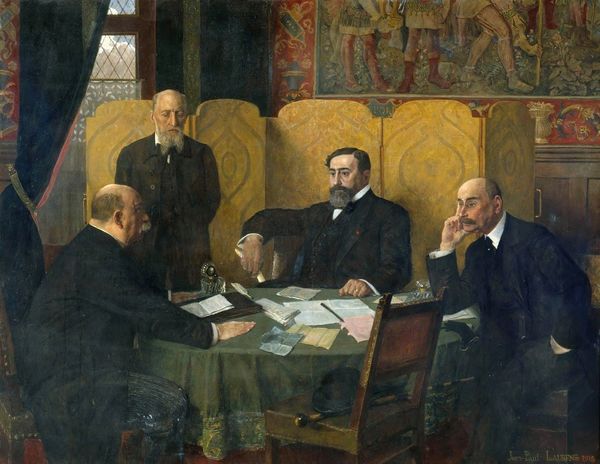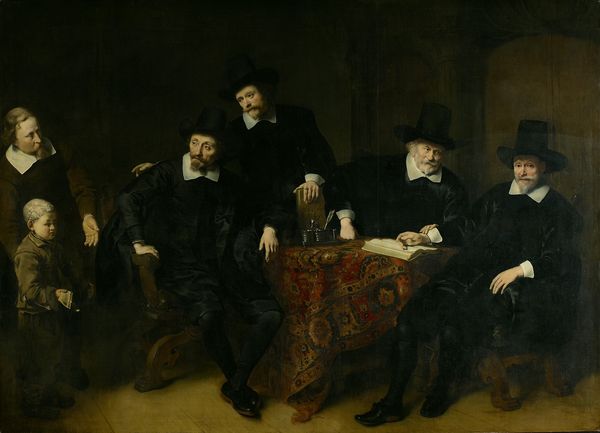
painting
#
portrait
#
figurative
#
painting
#
impressionism
#
group-portraits
#
genre-painting
#
academic-art
#
modernism
Copyright: Public Domain: Artvee
Curator: Here we have Henri Fantin-Latour’s "A Studio at Les Batignolles," created in 1870. What's your first reaction to the piece? Editor: It's a very formal, almost somber gathering, isn't it? The limited palette emphasizes a seriousness, a concentrated mood that hangs in the air around these figures. Curator: Precisely. Fantin-Latour has meticulously constructed the composition to evoke a sense of reverence for the artistic enterprise. Note how the subjects are arranged, creating visual relationships between the figures. The geometric structure, combined with the restrained color palette, serves to emphasize the gravity of their creative endeavors. Editor: Indeed, but it’s not just about form. The setting—an artist's studio—speaks to the rise of artistic communities during this period, especially those associated with early Impressionism. And to note the focus on Édouard Manet as the central figure—it elevates him within the group and symbolizes his influence on avant-garde painting at the time. Curator: Yes, Manet's placement acts as a signifier of his prominence, the careful selection of subdued earth tones against the canvas to focus the audience's eye onto the art itself, but even more significantly, onto the creative mind at work. The still life on the left functions almost like a collection of symbols, hinting to both the artist's subject matter and stylistic inspiration. Editor: And one must also consider who is missing. It’s been pointed out that women, despite their increasing presence in artistic circles, are absent, which suggests the painting is staging a very specific vision of artistic production. It is promoting the brotherhood of painters. Curator: Such absences only underscore the artist’s calculated composition, forcing us to look at what IS emphasized and question why. It becomes, in its own way, a visual manifesto. Editor: I agree. Ultimately, it reveals how art isn’t created in a vacuum, it exists and means differently as historical conditions continue to influence the creative process. Curator: It’s an interesting piece; beyond just representing fellow artists, it acts as a complex layering of symbols regarding modernism.
Comments
artera over 1 year ago
⋮
Threatened by the shift toward Impressionism, the powerful elite of traditionalists that controlled the galleries and salons of Paris rejected more and more new paintings by the artists depicted here. Every exhibition provoked alternative exhibitions of the work of the avant-garde, to the fury of the public and critics alike. Eduoard Manet, who is seated at the center of the composition staring defiantly out at the viewer, was a figurehead for this new movement and bore the brunt of much reactionary criticism. For Henri Fantin-Latour (1836-1904), his friend and admirer, the decision to paint Studio at Batignolles constituted a personal petition in favor of Manet's genius and the desire to capture a moment of revolution in the history of art. As a historical document it has the feel of an early daguerreotype, thanks to the light quality and the carefully posed stance of each subject. Although he was closely allied with the revolutionaries here, including Auguste Renoir and Claude Monet, Fantin was in fact a far more traditional painter than any of them, and this work is therefore a brave statement of support.
Join the conversation
Join millions of artists and users on Artera today and experience the ultimate creative platform.
